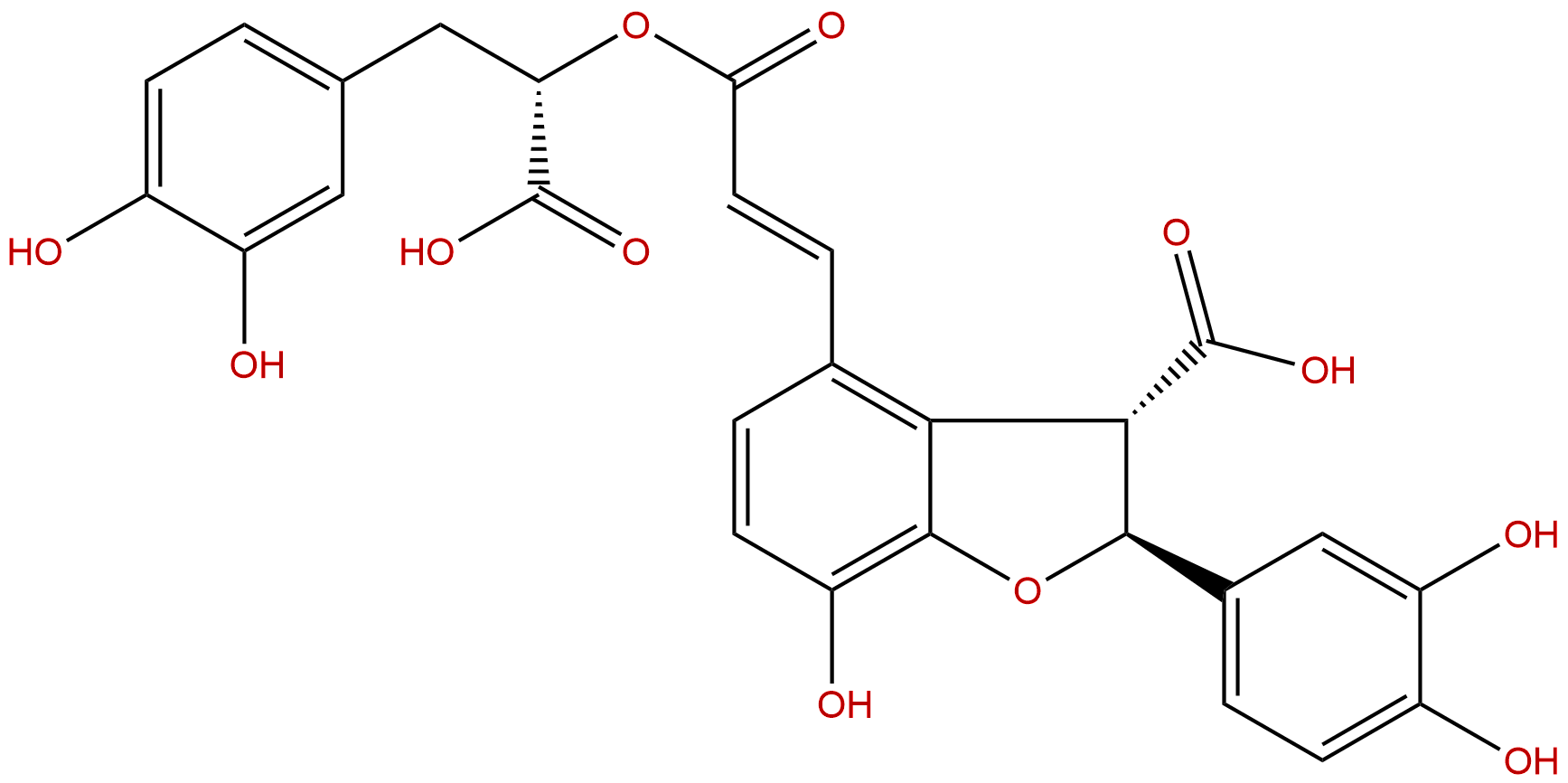
Lithospermic acidCAS No.:28831-65-4
|
||||||||||
 |
|
|
||||||||

| Catalogue No.: | BP0878 |
| Formula: | C27H22O12 |
| Mol Weight: | 538.461 |
Product name: Lithospermic acid
Synonym name: Lithospermic acid A; Clinopodic acid H
Catalogue No.: BP0878
Cas No.: 28831-65-4
Formula: C27H22O12
Mol Weight: 538.461
Botanical Source: Clinopodium chinense var. parviflorum, Cynoglossum officinale, Cordia spinescens, Lycopus europeus, Salvia miltiorrhiza, Lithospermum ruderale and Lithospermum officinale
Physical Description: Powder
Type of Compound: Phenylpropanoids
Purity: 95%~99%
Analysis Method: HPLC-DAD or/and HPLC-ELSD
Identification Method: Mass, NMR
Packing: Brown vial or HDPE plastic bottle
Storage: Store in a well closed container, protected from air and light. Put into refrigerate or freeze for long term storage.
Whenever possible, you should prepare and use solutions on the same day. However, if you need to make up stock solutions in advance, we recommend that you store the solution as aliquots in tightly sealed vials at -20℃. Generally, these will be useable for up to two weeks.
The product could be supplied from milligrams to grams, up to kilograms
Inquire for bulk scale.
Descriptions:
Lithospermic acid (LSA) was originally isolated from the roots of Salvia mitiorrhiza ,
has antioxidant effects, is a competitive inhibitor of xanthine oxidase (XO), can directly scavenge superoxide and inhibit superoxide production in vitro, and presents hypouricemic and anti-inflammatory actions in vivo.[1]
Lithospermic acid has inhibitory effects on proliferation and migration of rat vascular smooth muscle cells.[2]
Lithospermic acid derivatives from Lithospermum erythrorhizon can increase expression of serine palmitoyltransferase in human HaCaT cells.[3]
Lithospermic acid possesses anti-HIV activity.[4]
Treatment with lithospermic acid B has a preventive effect on the development of diabetic retinopathy in this animal model, probably because of its antioxidative effects and anti-inflammatory effects.[5]
Lithospermic acid can attenuate 1-methyl-4-phenylpyridine-induced neurotoxicity by blocking neuronal apoptotic and neuroinflammatory pathways.[6]
Lithospermic acid has hepatoprotective effects against carbon tetrachloride-induced liver oxidative damage in vitro and in vivo.[7]
Lithospermic acid can attenuate mesenteric ischemia reperfusion injury in rat intestines by increasing tissue SOD and GPx activities and decreasing MDA and MPO levels, also improves morphological alterations which occurred after periods of reperfusion.[8]
References:
[1] Liu X, Chen R, Shang Y, et al. Chem Bioll Interact, 2008, 176(2–3):137-42.
[2] CHEN, Wen-yi, WANG, et al. Acta Pharmacol Sin, 2009, 30(9):1245-52.
[3] Thuong P T, Kang K W, Kim J K, et al. Bioorg Med Chem Lett, 2009, 19(6):1815-7.
[4] Varadaraju T G, Hwu J R. Org Biomol Chem, 2012, 10(28):5456-65.
[5] Jin C J, Yu S H, Wang X M, et al. Plos One, 2014, 9(6):e98232-e98232.
[6] Lin Y L, Tsay H J, Lai T H, et al. J Biomed Sci, 2015, 22(1):1-13.
[7] Chan, Ho. Oncol Rep, 2015,34(2):673-80.
[8] Ozturk H, Terzi E H, Ozgen U, et al. Adv Clin Exp Med, 2012, 21(4):433-9.
[9] Yan L U, Sai-Wei W U, Dan-Hua X U. China j Chinese Materia Medica, 2015, 40(9):1744-6.
HPLC of Lithospermic acid

HNMR of Lithospermic acid
